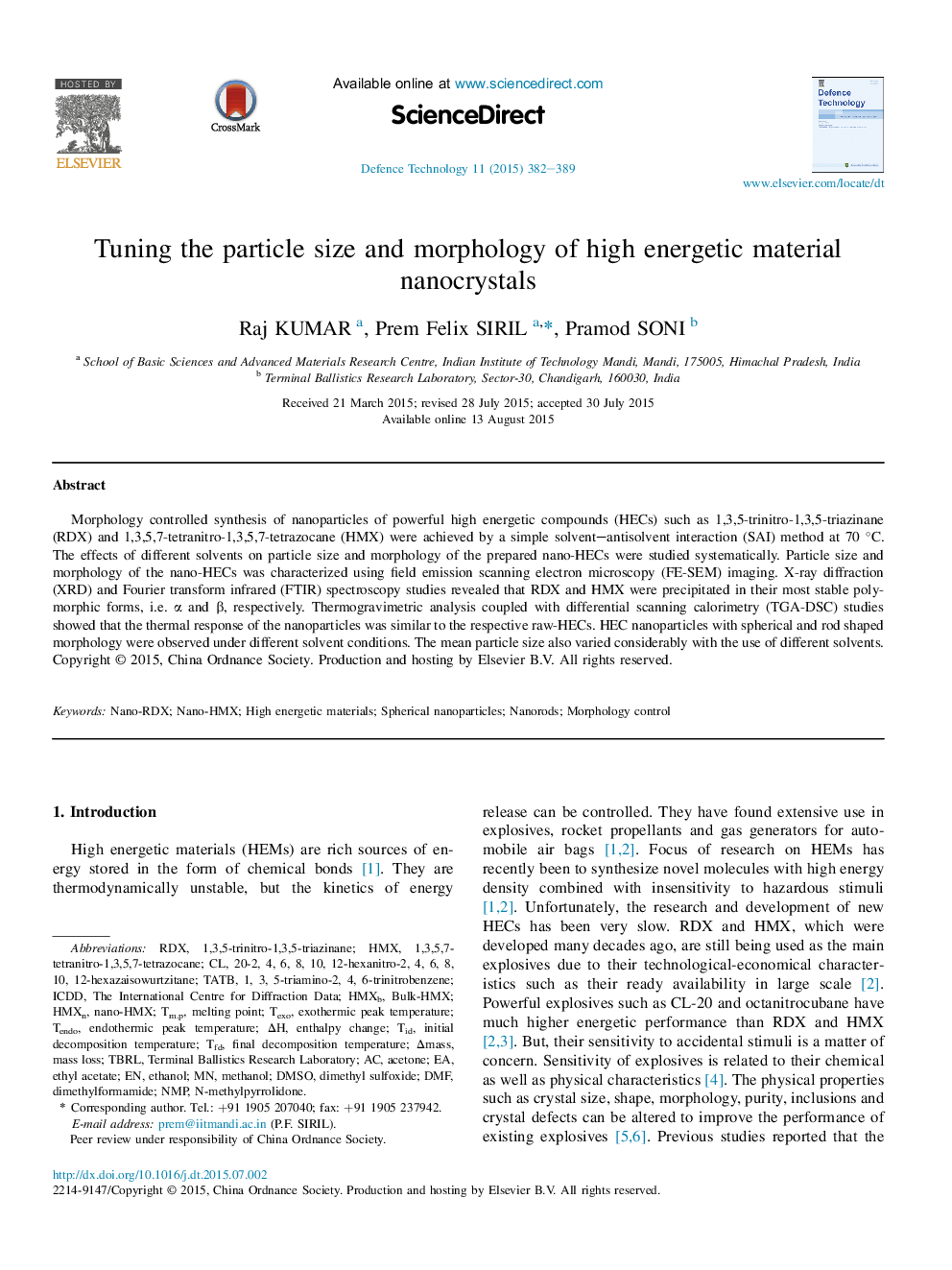| Article ID | Journal | Published Year | Pages | File Type |
|---|---|---|---|---|
| 759681 | Defence Technology | 2015 | 8 Pages |
Morphology controlled synthesis of nanoparticles of powerful high energetic compounds (HECs) such as 1,3,5-trinitro-1,3,5-triazinane (RDX) and 1,3,5,7-tetranitro-1,3,5,7-tetrazocane (HMX) were achieved by a simple solvent–antisolvent interaction (SAI) method at 70 °C. The effects of different solvents on particle size and morphology of the prepared nano-HECs were studied systematically. Particle size and morphology of the nano-HECs was characterized using field emission scanning electron microscopy (FE-SEM) imaging. X-ray diffraction (XRD) and Fourier transform infrared (FTIR) spectroscopy studies revealed that RDX and HMX were precipitated in their most stable polymorphic forms, i.e. α and β, respectively. Thermogravimetric analysis coupled with differential scanning calorimetry (TGA-DSC) studies showed that the thermal response of the nanoparticles was similar to the respective raw-HECs. HEC nanoparticles with spherical and rod shaped morphology were observed under different solvent conditions. The mean particle size also varied considerably with the use of different solvents.
